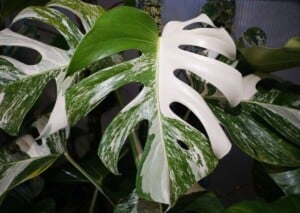Herb gardeners growing parsley at home often select between two common varieties; flat leaf and curly-leaf. Which type you choose depends on your taste:
Flat leaf or Italian parsley (Petroselinum crispum neapolitanum) is similar in appearance to cilantro and offers a robust, full flavor. It is the preferred variety for cooking and is often used to add flavor to soups and stews.
Curly-leaf parsley (Petroselinum crispum) is coarse with a dark-green (chlorophyll) flavor. It is often used as a garnish or chopped and added to salads.
Parsley is an excellent source of vitamins A, E and C and includes many essential minerals like iron and calcium. It is also used as a natural breath freshener. Hardy plants grow 10-20 inches tall and make a remarkable border around gardens.

FREE SHIPPING!
Parsley, Giant from Italy (Organic)
Prized by Italian cooks for its strong flavor and large dark-green, flat leaves.
$3.00Learn moreHeirloom parsley makes a name for itself with generous leaves and a wonderful flavor. Planting instructions are included with each seed packet and shipping is FREE!
Quick Guide: Planting, Growing & Harvesting Parsley
- Choose flat-leaf for full flavor or curly for a refreshing
- Start from seed indoors about 2-3 weeks before last frost or sow directly into garden just before the last frost
- Tolerates cool weather very well
- Provide rich, compost-amended soil, afternoon shade and plenty of water
- Use fresh or dried; harvest after large leaves with three sections appear
Sunlight: Full sun to partial shade; afternoon shade preferred
Maturity: 65-90 days from seed
Height: 10 to 20 inches
Spacing: 6 to 12 inches apart
Site Preparation
Parsley requires ample water, well-drained, rich soil and afternoon shade, especially in hot climates. Prepare beds or rows with plenty of organic compost or well-aged animal manure, worked into a depth of 6 inches (see our article How to Prepare Soil for Planting). It is a great companion plant with asparagus, tomatoes, peppers, carrots and peas.
Tip: This herb will attract butterflies and beneficial insects to gardens and landscaped areas.
How to Plant
Sow parsley from seed or plant from nursery stock at the beginning of each growing season. Plant seeds in the garden 1/4 inch deep when there is still a chance of light frost. Seeds germinate in 14 to 21 days and can be soaked in warm water or compost tea for 24 hours before planting.
Parsley is a heavy feeder. Apply one application of dry organic fertilizer in the spring and monthly foliar feedings to ensure healthy growth.

Harvesting and Storage
Begin harvesting parsley when it produces leaves that resemble a 3-leaf clover. Not only is this powerful green wonderful when used fresh, but it also dries and freezes well. Cut the foliage when it’s plentiful in summer, then freeze in a resealable plastic bag or dry it for winter use.
To dry, tie the cuttings in small bunches and hang upside down in a well-ventilated, dark room. When dry, remove the leaves from the stems and keep whole for storage. Crush or grind just before use. Learn more about Harvesting and Storing Herbs here.
Insect & Disease Problems
Parsley is rarely bothered by pests. However, you may have to handpick an occasional caterpillar. The larvae of the black swallowtail butterfly is particularly fond of this herb. Prevent plant diseases by choosing a site with good air circulation. Apply organic plant fungicides — copper, sulfur — early, when symptoms first appear.
Seed Saving Instructions
Biennial. Plants will cross-pollinate, so isolate by 1 mile the second year when going to seed. Dig up roots in the fall before a hard frost. Trim the tops to 2 inches and store in sawdust, sand or leaves. Parsley roots will store 3-4 months when kept between 32-40˚F. Plant out in early spring. Harvest seed heads when dry and separate by hand.











